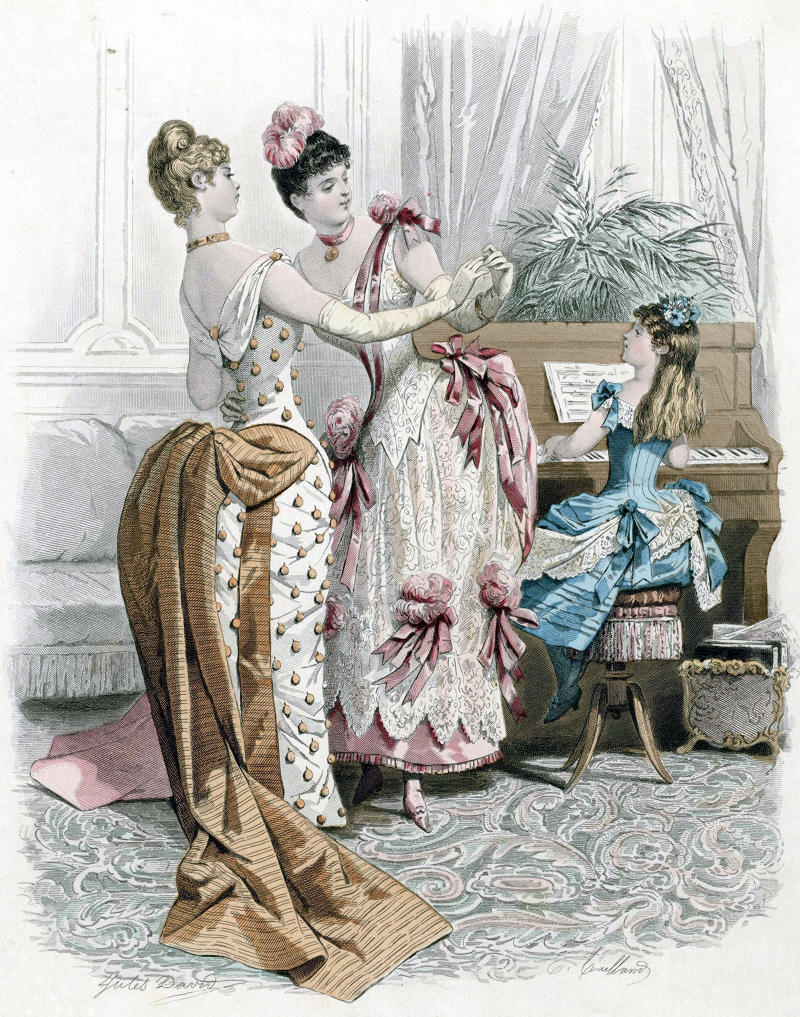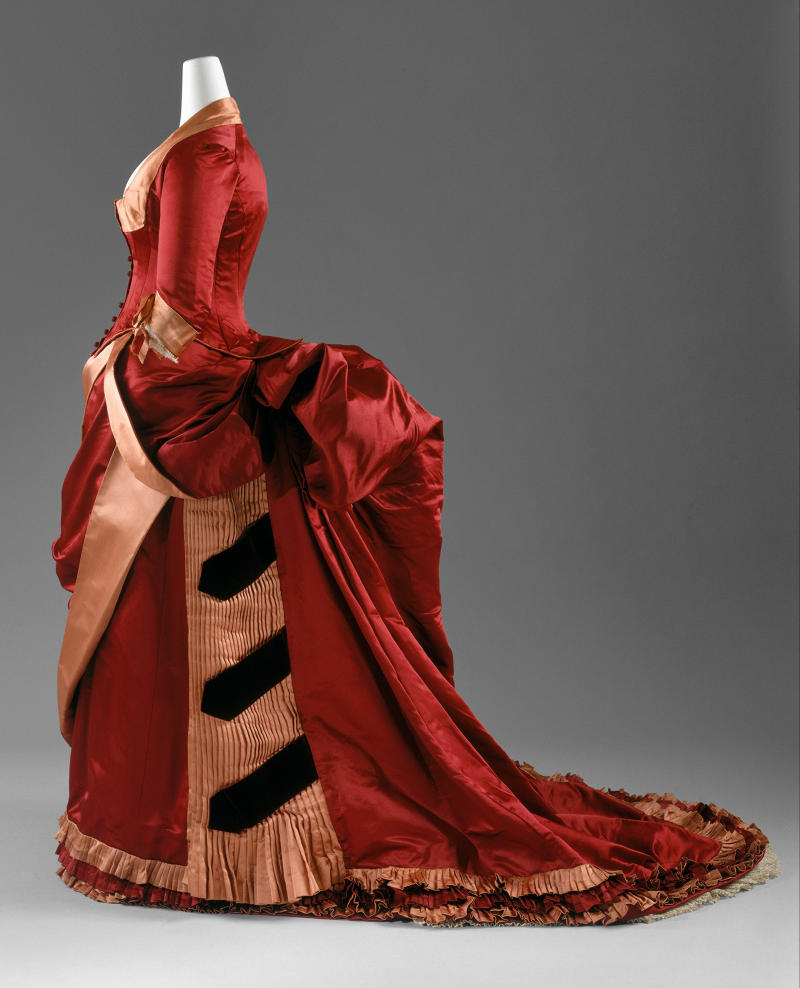The Victorian fashion era began and ended with Queen Victoria in 1837 – 1901. The clothing displayed class, wealth, and beauty. The era had many phases and skirts and accessories evolved quickly. Signature accessories such as the parasol and fan are iconic to the period.

White wedding dresses were not the norm until Queen Victoria in 1840. White symbolized innocence and status and was quickly adopted as the standard. Pure white clothing was near impossible to come by as washing machines weren’t standard, they represented high class. Her veil was 12ft long and was buried with her. Her train required 12 bridesmaids to carry it as it was 18ft long.
The Victorian era introduced the notion of a woman’s place being in the home. Victorian fashion had no utilitarian purpose, rather it was an expression of status. Once the exaggerated shoulders fell out of fashion, a corset was warn to achieve a similar effect. The ‘hourglass figure’ arrived in the 19th century and never quite left. Victorian corsets differed from earlier renditions as the hips flared out beyond the waist rather than ending at the hips. Spiralled steel kept the shape of the corset and curved with the figure.

The bustle was introduced in the late 1860s and added mobility to fashion. Since the back was fuller, it allowed more mobility in the front and sides. The Victorian fashion movement has impacted modern day drag and art today. It’s likeness it featured in many historical pieces and films as the distinctness of the clothing immediately sets the tone.

As time went on, skirts were made shorter as women became more involved in activities outside of the home. The 1860s brought crinolines into fashion.
Leave a Reply